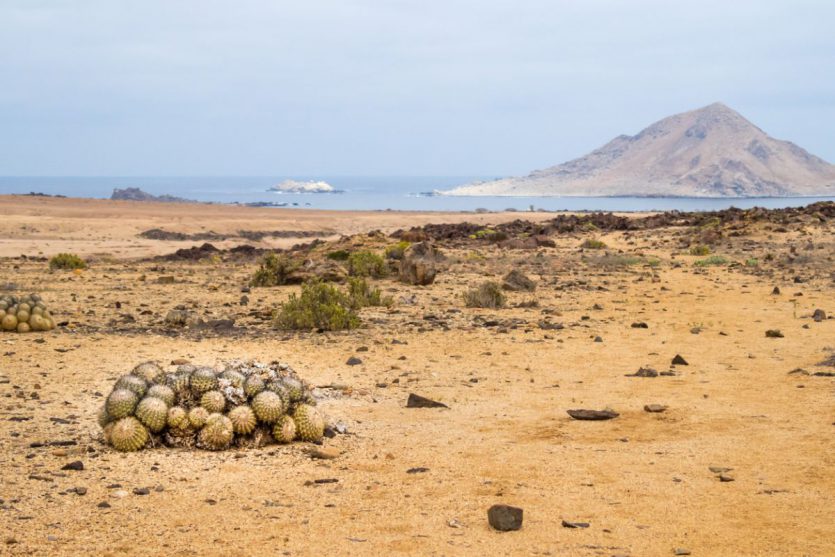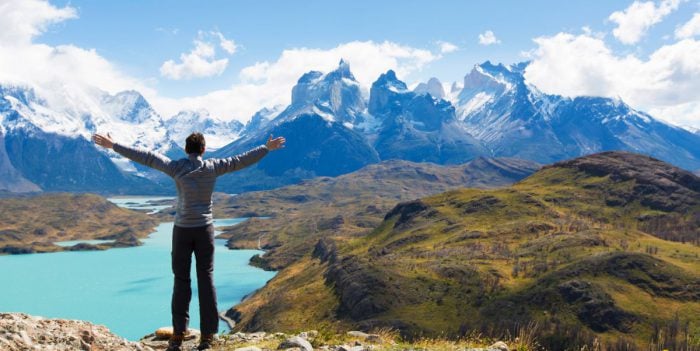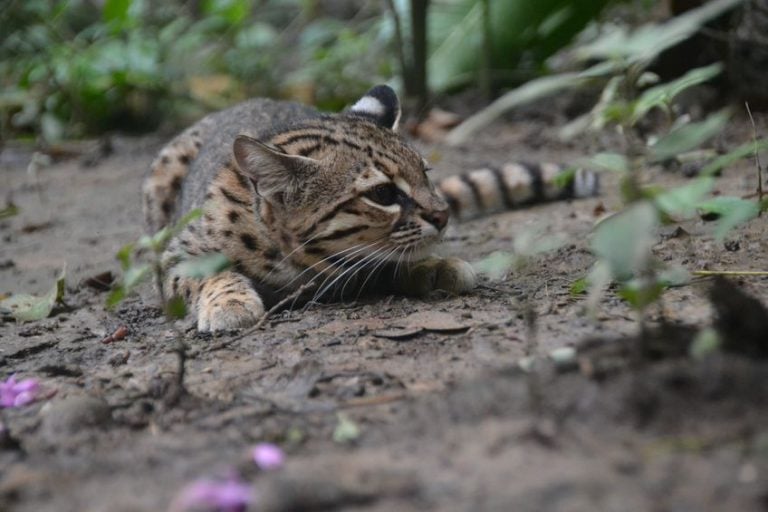
The deserts of South America are full of life and spectacular sites. Martian landscapes, petrified forests, magnificent vivid colors and formations, cave paintings, spouting geysers, hot springs, saltwater lagoons, and some of the most remarkable night skies on the planet. And, of course, flamingos.
The Atacama Desert, northern Chile
The most famous desert in South America, the Atacama Desert, is one of the driest places on Earth. This high-altitude landscape has spellbinding vistas. And with year-round clear skies, it’s one of the best places in the world for stargazing.
While it is extremely dry, you can still find water – just in very unusual forms. For instance, the Tatio geyser field has 80 geysers. You have to be there at sunrise to see them erupt. But the early-morning trek is worth it.
There are great places for hiking in the Atacama too. Death Valley and Moon Valley both have incredible landscapes and are not far from San Pedro de Atacama, the ideal base for exploring the region.
The Atacama Desert bloom
Every few years, there is enough rain in the winter for the spectacular desert bloom in spring. Around 200 species of bulb plants, which lie dormant through the dry years, burst into a spectacle of purple and yellow in the desert landscape.
Andean Altiplano
The Andean Altiplano is part of the Atacama. It is 4,000 meters above sea level and has the biggest salt flat, Salar de Uyuni.
Almost nothing lives in this environment except a small invertebrate, the artemia. This is what brings the flamingos that come to feed on them. The best time to spot large flocks of flamingos is in summer.
The Patagonian Desert, Argentina
The Patagonian Desert, or Patagonian Steppe, is a giant open landscape and an amazing place to explore for travelers interested in insane scenery, fascinating geological formations and natural desert flora and fauna.
What to see and do in the Patagonian Steppe?
Sendero de los Colores, The Land of Colors
The Sendero de los Colores is an amazing desert experience just off the iconic ruta 40 highway south of the giant glacier Perito Moreno. This 4.8-kilometer hiking track takes 1.45 hours and passes an incredible expanse of pink, orange, yellow, red, and white rock in curious and beautiful formations. The trail is free, well-marked and there is a campsite inside the park.
Cueva de las Manos, Cave of Prehistoric Hand Paintings
An hour’s drive south is the Cueva de las Manos, a World Heritage Site cave with 12,000-year-old human hand paintings located in a river canyon with 1-hour guided visits explaining the prehistoric origins. It’s a rough road to get to this place, but the caves and the views are worth it.
What birds and animals are found on the Patagonian Steppe?
The Steppe is home to over 100 species of birds and other wildlife including several endangered species.
Spot the native flightless bird, the lesser rhea (like little ostriches but pretty), elegant crested tinamous, scale-throated Earthcreepers, black-chested buzzard eagles, spectacled tyrants, Patagonian mockingbirds, and many more species just as interesting as their names.
The Steppe is home to many animal species too, including pumas, chinchillas, Patagonian foxes, and, of course, guanacos, among others. And despite the aridity, there are some very interesting and beautiful Patagonian desert plants including the cushion plant and the peppertree.
Desierto del Diablo, Argentina
This one is for the adventurous and geology aficionados. Imagine a cross between Mars and Tatooine. The Desert of the Devil in Northeast Argentina exists in stark isolation, a 9-hour drive from the capital of its province of Salta.
The nearest town is Tolar Grande, a tiny little place of 35 families who are the custodians of the desert and have a lively indigenous culture which you have no choice but to experience if you take a tour from the city of Salta – they all include overnight stays, which makes more sense than driving 18 hours in one day.
The landscape here is fascinating, it is an intense rusty red, similar to Australia’s red center, but not all flat. There are steep slopes, mountains, and funny protuberances poke out of the ground in the shape of cones or pyramids.
Lagoons in a protected area 5 km from Tolar Grande, called “ojos de mar”, eyes of the sea, have stromatolites – live prehistoric microorganisms that live in an environment similar to where life began 3.5 billion years ago.
Salvador Dalí Desert, Bolivia
This desert is beautiful, silent, and surreal. It is not named after the artist because he visited or had any kind of affinity with it. It’s because its landscapes look like they belong in one of his surreal works of art, in particular, the Stone Tree, or the Persistence of Memory.
These are just a few of the many different deserts of South America.
No comments yet
There are no comments on this post yet.




Leave a comment